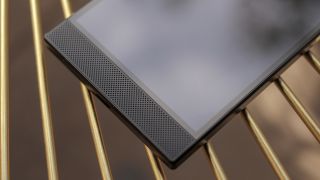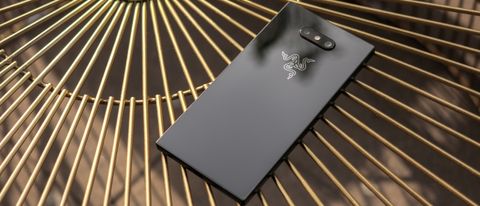Why you can trust TechRadar
Battery
The Razer Phone 2’s battery story is anything but simple. The numbers are solid: 4,000mAh - on-par with the Huawei Mate 20 and the Samsung Galaxy Note 9. In day-to-day use, like those other phones, it also lasts a full day, with around 15% left in the tank when we turned in most nights.
Despite this, max brightness screen-on time in test conditions was poor - worse than most other flagships on the market. A 90-minute video knocked the battery down to 70%. To put that into context, the OnePlus 6T, after the exact same test only dropped to 90%.
So if you plan on setting your Razer Phone 2 at full beam, there’s a good chance battery life will vary more than most devices depending on screen time.
It is better than the original Razer Phone in terms of charging options, with Qi wireless charging support, complete with a fancy optional RGB charging dock, and Quickcharge 5. There’s also a battery saver mode available in the settings to help eke out even more life.
Camera
Unlike the new Mate 20 Pro or LG V40, the Razer Phone 2 doesn’t have three cameras around the back, instead featuring a primary wide-angle camera and a 2x telephoto lens like the iPhones.
Both cameras are 12MP, with the main camera featuring an f/1.75 aperture lens, while the telephoto lens aperture is f/2.6.
Thankfully, Razer has introduced OIS to the primary lens, which really helps when compared to the first Razer Phone, especially with video recording. There are also a lot more modes out of the box, including automatic mode, portrait mode, beauty mode and panorama.
The camera also supports up to 4K video, though there’s no slow motion option.
As for the quality, it’s fine… ish.







Photos in good light have respectable amounts of detail. Tapping the screen both focuses and resets exposure for spot-focused metering. Despite an auto HDR feature, however, dynamic range isn’t great, falling behind all the main players.
The second the light drops just a little, so too does detail, with contrast being too high, noise reduction muddying things and clarity falling low despite noticeable sharpening being applied. The result is an overly dramatic-looking, underwhelming picture most of the time - and as for dark scenes, it’s something of a throwback to what flagships were doing around three years ago.
Things don’t improve when we move onto the telephoto camera - we tended to avoid this. It’s good for depth of field effects, which actually aren’t too shabby, but when it comes to 2x zoom pictures they don’t deliver a discernible amount of extra detail when compared to their wide-angle counterparts, and it’s even worse in poor lighting.



It’s frustrating, as you can get some great shots in the right lighting once you know how to manipulate the Razer Phone’s camera. So could we suggest the Razer Phone 2 as a camera phone knowing what else is on the market? Sadly not.
Meanwhile, the selfie camera with its 8MP resolution and f/2 aperture offers bokeh and beauty effects. Unsharp is the name of the game here, with even shots taken in good light looking a little softer than similar shots from other top-end phones - although when you’re talking about selfies that isn’t always a bad thing.
Interestingly, the best thing about the Razer Phone’s camera is its video performance. The up to 4K resolution footage looks ace, and even holds up in middling lighting, much to our surprise.
Sound
A gaming phone is only as good as its stereo speakers - and luckily for the Razer Phone its stereo speakers are banging.
They deliver the kind of powerful, crisp and rounded, it manasound you’d hope for when playing games without headphones.
Within the settings are a range of tuning options courtesy of Dolby, with equalizer customizations and some presets – dynamic, movie and music. You can also choose custom, and there’s a bass enhancer too.

If you get some time with the Razer Phone 2, we would urge you to try out the Dolby Atmos demo within the settings. The sound separation it showcases is unlike anything we’ve used before on a phone – it’s quite breathtaking.
Regular content also sounds great, and while the Pixel 3XL may be a bit louder volume isn’t everything, and we’re confident you won’t be disappointed if you care about audio and pick up the Razer Phone 2.
This audio excellence also extends to the supplied USB-C to 3.5mm jack adapter, which features a 24-bit DAC, and sounds tangibly better than other supplied adapters we’ve used.
Basil Kronfli is the Head of content at Make Honey and freelance technology journalist. He is an experienced writer and producer and is skilled in video production, and runs the technology YouTube channel TechEdit.

